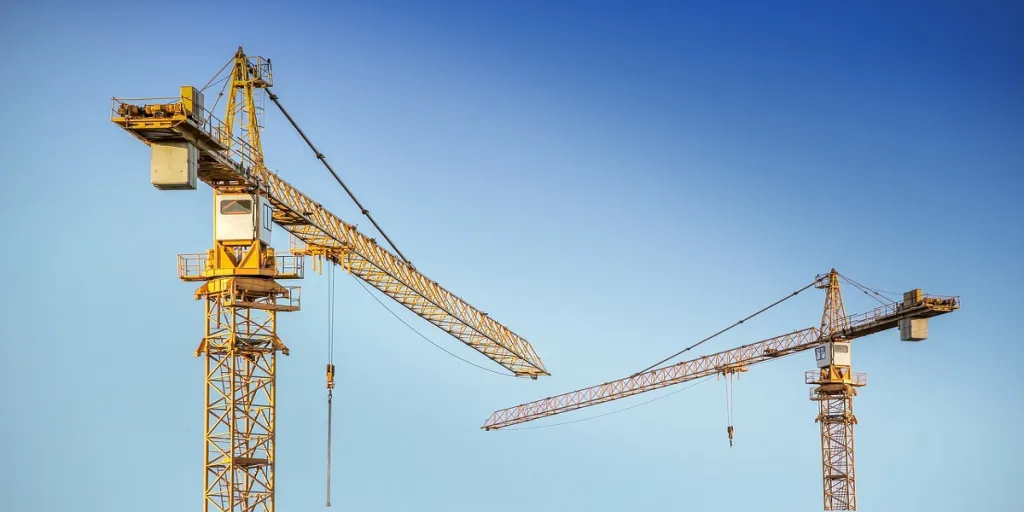Southeast Asia has a population of over 685 million people, and that number is expected to continue growing for the foreseeable future. This growth will lead to the need for more airports, roads, and other types of infrastructure improvements in the region.
Construction equipment is a vital part of the infrastructure of any economy. It’s used to build everything from roads and bridges to homes and offices, and without it, a country’s development would be severely hampered. Southeast Asia is no exception.
As the region continues to grow economically, construction equipment will continue to be in high demand for years to come. Construction machinery is used in all stages of construction projects; from site preparation to building materials delivery and even final cleanup.
While there are many factors affecting how businesses can succeed in their venture into Southeast Asia, there are also many ways for them to get started. This guide aims to help with that process by providing an overview of the SE Asian construction equipment market as a whole and helping businesses get acquainted with the 4 countries leading its development. So without further ado, let’s dive right in!
Table of Contents
Construction machinery in Southeast Asia: a market snapshot
4 countries leading the construction machinery market
Competitive landscape of the construction machinery market
How to succeed in the SE Asian construction equipment market
Construction machinery in Southeast Asia: a market snapshot

The construction equipment market in Southeast Asia is expected to grow at a compound annual growth rate (CAGR) of 6.37% during the next few years, reaching US $10.7 billion by 2028. The region has several factors that are supporting this growth, including rapid urbanization, growing infrastructure projects, and increasing demand for commercial buildings.
The Southeast Asian market is dominated by earthmoving machinery such as excavators and bulldozers, which are used for land development activities such as clearing land or digging ditches. These types of heavy equipment are expected to be in high demand as infrastructure projects are undertaken across the region to improve connectivity between countries.
Earthmoving machinery, cranes, and material-handling equipment such as forklifts are also widely sought after by infrastructure developers for loading and unloading materials, as well as transportation purposes.
And as the construction machinery market in Southeast Asia continues to grow, businesses need to understand the forces that drive this growth, as well as where opportunities lie. The following section will outline some of the key drivers and challenges that are shaping the growth of this market.
Market drivers and restraints
| Market drivers | Market restraints |
| Government support, especially in terms of restoration efforts and kick-starting development projects, continues to drive demand for heavy equipment and construction trucks such as dump trucks. | Stringent government regulations regarding environmental laws and other policies restricting the sale of emission-intensive vehicles pose a constant threat to the growth of the construction machinery market in Southeast Asia. |
| Southeast Asian countries spent US $479.3 billion between 2017 and 2021 on infrastructure development. This increase in infrastructure spending across this region has led to a rise in demand for cranes, trucks, excavators, and other construction equipment. | Building materials such as cement and steel have always been volatile, with raw material prices increasing by more than 30% in 2022. As a result, some construction developers dare not invest in property development projects because they worry about their profit margins. |
| The continued growth in manufacturing activities paved the way for building more industrial facilities to meet the needs of domestic and overseas manufacturers. This has led to an increase in construction site activities, leading to a greater demand for construction machinery. | In many cases, construction companies prefer to rent used machinery and equipment instead of purchasing in full. This rental model creates a major hurdle for the sales of new construction machinery, especially heavy equipment vehicles like backhoe loaders. |
Market opportunities and threats
| Market opportunities | Market threats |
| In recent years, the governments of several Southeast Asian countries have launched initiatives designed to encourage infrastructure development and the adoption of technologically advanced machinery. These initiatives include making funding more accessible, providing tax incentives, and developing a legal framework for foreign investment. | The construction industry in Southeast Asia is largely unsophisticated, with supply chains that are impractical and reliant on paper-based processes. This lack of innovation has led to an overreliance on labor-intensive methods and outdated machinery. |
| The construction industry is getting smarter thanks to digitization. As a result, we can expect to see more construction equipment with connectivity features and automation capabilities in the future. This will help create smarter construction sites that can be managed remotely. | The legal and regulatory framework in Southeast Asia has hampered international construction projects, while the slow pace of infrastructure development is due to poor planning by government agencies. This excessive bureaucracy can delay the obtaining of permits, licenses, and other approval documents. |
| Property investments across Southeast Asia have been on the rise in recent years, with yields reaching up to 10% in Myanmar, Vietnam, and Indonesia. As a result, many real estate developers are considering joint ventures with international firms to build residential units and commercial buildings. | The construction equipment industry in Southeast Asia is undergoing a major shift as the sector is being reshaped by IoT and remote technologies. Manufacturers of construction equipment are now obliged to further invest in R&D if they want to stay competitive. |
4 countries leading the construction machinery market
It’s clear by now that the construction machinery market is one of the fastest-growing industries in Southeast Asia. But with so many different types of machinery and equipment out there, it can be hard to know which are worth investing in, and which aren’t.
So how do businesses know where to begin? How do they get up to speed on the current state of the market? And how can they tell which competitors are going to be best positioned to take advantage of this growth? Thankfully, this section will answer all these questions by introducing four countries leading the construction machinery market in Southeast Asia.
1. Vietnam

The construction machinery market in Vietnam is expected to grow at a CAGR of 5.80%, from US $616 million in 2021 to US $913 million by 2028. This growth can be attributed to the significant investments made by the Vietnamese government in the infrastructure sector.
The government intends to invest US $11 billion in airport development, while it plans to spend an additional US $65 billion on road improvements by 2030. This will help increase the number of airports across the country as well as expand its existing road network by building new highways throughout the country.
Furthermore, the Vietnamese government announced a new set of incentive policies to promote investment in the construction industry, especially for foreign companies. One such policy includes the introduction of the Public-Private Partnerships (PPP) model, where private companies are allowed to invest in public projects under a concession agreement with the government for a certain period.
The risk-sharing mechanism between the government and investors is taken care of through this model, encouraging them to invest more in the country’s infrastructure development projects.
And the rising urbanization in regions like Ho Chi Minh City and Hanoi along with the significant investments made by the government toward infrastructure development is likely to drive growth in construction equipment sales.
Sales of 6,869 units are anticipated by 2028, with material-handling equipment, particularly forklifts, accounting for the largest part of the market. In terms of earthmoving machinery, backhoe loaders will also see considerable demand due to their extensive use in civil work and urban development projects such as the construction of roads and highways.
2. Singapore

The construction machinery market in Singapore is projected to reach US $444.2 million by 2027, growing at a CAGR of 4.36% from 2021–2027. The market has been growing rapidly since 2019, driven by rising demand for infrastructure and housing projects. The government plans for a major redevelopment of the country’s transport infrastructure to increase connectivity between the main island and surrounding islets.
The Singaporean government plans to spend US $35 million on these projects by 2027. For example, Changi Airport recently opened a fifth terminal (T5). The rapid growth of traffic at Changi Airport has led to the need for additional facilities and services. To cope with this growth, the airport will expand its capacity by building new tunnels and underground systems that connect existing terminals. In addition, other projects include making the Tuas Mega port one of the world’s largest transshipment hubs with a handling capacity of 65 million twenty-foot equivalent units.
As the Singaporean government continues to invest heavily in urban development and transport infrastructure, demand will rise for bulldozers, trenches, and large excavators. This demand growth will be driven by an increasing need for preparing a foundation or surface for construction work, paving or land grading, and other activities related to infrastructure development.
These machines can help level ground, dig ditches and trenches, move dirt and gravel around, or break up concrete slabs.
3. Thailand

Thailand is one of the fastest-growing construction equipment markets in Southeast Asia, and its market size is projected to reach US $2.78 billion by 2028 with a CAGR of 6.22%. The country’s construction industry accounted for 52.6% of total country revenue in 2021, with tremendous growth potential over the next decade due to massive government expenditure on infrastructure development.
In the last few years, the Thai government has implemented various initiatives to encourage renewable energy growth. One of these initiatives is a program that aims to add 6GW of solar power capacity by 2036.
This is particularly important as solar panel costs have decreased significantly in Thailand over the past five years. As a result, more earthmoving equipment will be needed to build the necessary infrastructure for this massive expansion of renewable energy production capabilities.
To expand the transmission network and strengthen the power grid, the government will invest heavily in building roads, highways, metros, and airports. This will increase the need for heavy machineries like cranes and crawler excavators.
In addition to their high cost-effectiveness ratio and low fuel consumption rate, crawler excavators are perfect for job sites where there are no paved roads or access points available due to terrain conditions like rocky terrain or muskeg swamps.
Furthermore, the country is also focusing on improving infrastructure development in rural areas and building new roads to connect them with urban centers. A lack of cheap labor, however, has been a major hurdle for construction businesses looking to expand into rural regions. As a result, the demand for mini excavators will increase because they are easier to transport on roads that have not yet been built or through difficult terrains such as mountains or jungles.
4. The Philippines

The construction machinery market in the Philippines is expected to reach US $1.79 billion by 2028 from US $1.6 billion in 2021, at a CAGR of 6.8%. The growth of this market is fueled by increasing investments in transport infrastructure development, environmental policies and waste management initiatives, and the removal of bans on new mining projects.
The number of people living in urban areas increased by more than 7.2% between 2015 and 2020. With an increasing number of people moving to cities, the government of the Philippines has been investing heavily in public infrastructure projects such as Makati Property Redevelopment.
This project alone will cost more than US $1.28 billion to transform the city into a world-class business hub by building new green-designed buildings. The project is expected to increase demand for aerial platforms due to its location in a highly dense urban area with high traffic congestion.
Moreover, there are several public road maintenance projects such as the NLEX-SLEX Connector Road project, which involves the operation and maintenance of a 4-lane elevated expressway across the national railway. These redevelopment projects will increase demand for motor graders, which are used for grading roads and clearing debris on roadways.
Apart from all these large-scale construction projects, environmental policies and initiatives will increase the usage of excavators and loaders in the waste management industry. The government has mandated that all construction sites use eco-friendly machines while disposing of debris generated by their activities.
Competitive landscape of the construction machinery market
The construction machinery market in Southeast Asia is highly fragmented, with many companies vying for a share of the pie. Among the major players in this sector are Caterpillar, Komatsu, Sany, Liugong, XCMG, and Kobelco.
Kobelco is one of the leading manufacturers in this market. The company is headquartered in the United States, with offices throughout the USA, Canada, and Latin America. Kobelco is known for its hydraulic excavators, which are used to dig large holes for foundations. In 2021, they reached a milestone, assembling 3 million hydraulic excavators, with a plan to hit the 4 million mark by 2023.
Caterpillar is also a well-known player in this market and has several manufacturing plants that produce earthmoving equipment such as heavy-duty haul trucks, bulldozers, and excavators. Caterpillar’s success can be attributed to its dedication to innovation and quality. They have been a leader in their field for over 100 years, and they are committed to continuing that tradition through continued research and development as well as new product launches.
Chinese manufacturers have also been making inroads into the construction equipment market, pushing for more innovation in construction machinery and processes. These innovations include remote control technologies, automated construction sites, and engines that use less fuel while still producing high torque numbers.
For instance, the SANY Group is one of the largest construction equipment manufacturers in the world and has been a pioneer in developing advanced construction machinery. They developed China’s first high-pressure, truck-mounted concrete pump with a large displacement, which helped to pave the way for their success.
Sany has been lauded for its commitment to research and development, with an impressive 30 years of continuous innovation. For example, they have added autonomous operation features to many models so that they can be operated remotely from anywhere.
LiuGong is another prominent Chinese manufacturer of construction equipment. Founded in 1958, LiuGong has been a leader in the industry for over six decades. In 1966, they were the first to bring a modern wheel loader to China. They have since expanded their manufacturing facilities and employees to over 17,000 people spread across 20 sites.
With 5 R&D bases and 17 regional parts centers, LiuGong has been able to address the needs of its customers across the globe with a wide range of products, including wheel loaders, backhoes, bulldozers, and loaders.
The leading players in this industry have different strategies for growth. Some of them are focusing on expanding their product portfolio by introducing new products such as swing excavators and demolition machines, while others are focusing on increasing sales through joint ventures and mergers.
How to succeed in the SE Asian construction equipment market
With the continued increase of urbanization and population growth, the construction machinery market in Southeast Asia is expected to grow substantially over the next several years. However, entering the market is not without its challenges. The market is highly fragmented, and many big players compete against each other for market share.
To succeed in this ferocious environment, it is important for companies to partner with local dealers who have established distribution networks and know the market well. By focusing on these three elements—distribution networks, small-scale projects, and brand recognition—it is possible for small businesses to thrive in this highly competitive Asian industry.
To learn more about what’s happening in the global construction machinery market, be sure to check these 8 revolutionary construction equipment trends.





 Afrikaans
Afrikaans አማርኛ
አማርኛ العربية
العربية বাংলা
বাংলা Nederlands
Nederlands English
English Français
Français Deutsch
Deutsch हिन्दी
हिन्दी Bahasa Indonesia
Bahasa Indonesia Italiano
Italiano 日本語
日本語 한국어
한국어 Bahasa Melayu
Bahasa Melayu മലയാളം
മലയാളം پښتو
پښتو فارسی
فارسی Polski
Polski Português
Português Русский
Русский Español
Español Kiswahili
Kiswahili ไทย
ไทย Türkçe
Türkçe اردو
اردو Tiếng Việt
Tiếng Việt isiXhosa
isiXhosa Zulu
Zulu